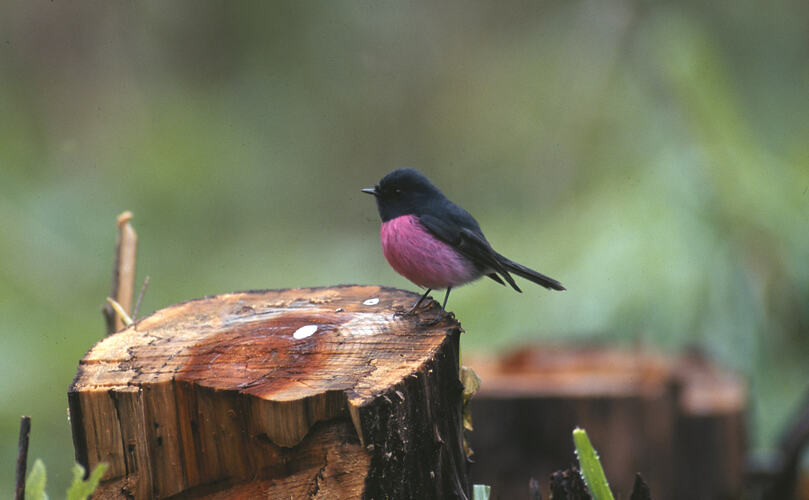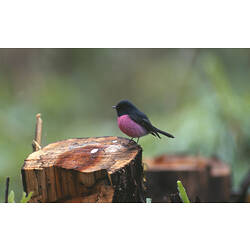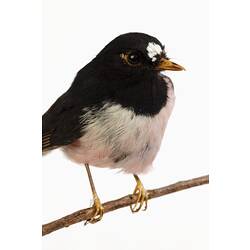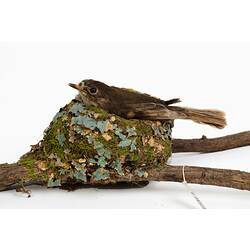General Description
The male is sooty-black on his back and top of chest, with a bright pink belly, a small white patch on his head and, sometimes, two faint buff wing bars. The female is brown with paler brown underparts, a pale brown spot on her forehead and, sometimes, a pale pink wash on the breast. Juveniles look like females. Body up to 13 cm long.
Biology
Pink Robins breed in spring-summer (from September to January) and migrate to drier open habitats in autumn. The female builds a well-camouflaged nest in the fork of a tree: she binds bark strips and green moss with spiders' webs to form a deep cup shape, decorates it with lichen and lines it with soft plants, feathers and fur. She incubates the 3-4 eggs on her own, but both parents feed the chicks. The Pink Robin is a predator, catching insects and spiders while foraging on the ground.
Distribution
South-eastern mainland Australia and Tasmania.
Habitat
Rainforest, tall open eucalypt forest and densely-vegetated gullies.
More Information
-
Animal Type
-
Animal SubType
-
Brief Id
Male: sooty-black with a bright pink chest and belly. Female: brown with buff wing bars and, sometimes, a faint pink breast.
-
Maximum Size
13 cm
-
Habitats
-
Diet
Carnivore
-
Endemicity
-
Commercial
No
-
Conservation Statuses
CITES: Not listed, FFG Threatened List: Not listed, EPBC Act 1999: Not listed, IUCN Red List: Least Concern
-
Taxon Name
-
Common Name
Pink Robin
-
Kingdom
-
Phylum
-
Subphylum
-
Class
-
Order
-
Family
-
Genus
-
Species Name
rodinogaster





